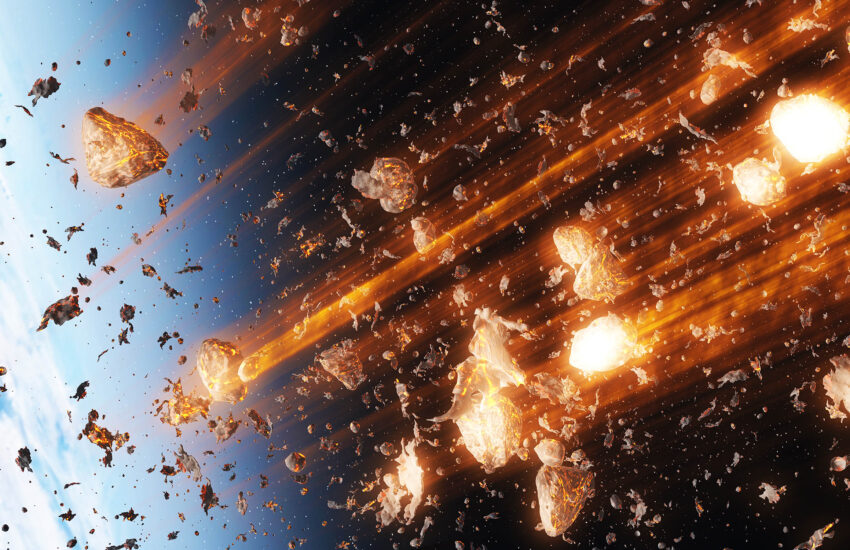A remarkable celestial event is upon us this month, presenting a sight that’s far from typical. On the night of July 30th, all of us will be in for a treat as not one, but two annual meteor showers light up the night sky simultaneously.
The Delta Aquarids and the Alpha Capricornids will reach their peak, offering a mesmerizing display of shooting stars.
This rare occurrence will give stargazers a unique opportunity. They will witness an impressive number of meteors streaking across the sky. It will make the night memorable.
To enjoy the event, make sure to find a dark spot away from city lights. This will help you fully appreciate the natural spectacle.
Meteor shower mysteries
The stellar event will predominantly occupy the southern sky. It will be a spectacular sight for those in the Southern Hemisphere. People in the southern latitudes of the Northern Hemisphere can also enjoy it.
It might be a tad tricky to differentiate which shooting star belongs to which constellation, though. These meteors will radiate out from different celestial figures, such as Orion, Perseus, and Gemini, creating a fascinating and enchanting mix of lights in the sky.
Each shooting star streaks across the night sky. It adds its own unique brilliance to the cosmic display. Observers watch in awe of the universe’s grandeur.
Understanding meteors
First, let’s clarify some terminology. Meteors, meteoroids, and meteorites are often used interchangeably. However, even though each word refers to the same thing, they signify different stages of the space rock’s journey.
Meteoroids are small rocks made of metals zooming through space at incredible speed. When they enter Earth’s atmosphere, they usually travel between 25,000 and 160,000 miles per hour (40,000 to 260,000 kilometers per hour).
When meteoroids enter Earth’s atmosphere, we then call them meteors. Their high speed causes the friction that makes them glow and produce the bright streaks across the skies that we know as “shooting stars.”
Finally, if a piece of these space rocks makes it all the way to Earth’s surface, we then call it a meteorite.
How meteor showers form
Meteors and meteorites come from our solar system, usually beginning their journey in the asteroid belt between Mars and Jupiter.
Some also come from comets. As comets get close to the sun, they lose material, which can cause meteor showers when Earth crosses their path.
Types and sizes
Meteors and meteorites differ in both size and composition.
- Stony Meteorites: Mostly made of silicate minerals
- Iron Meteorites: Mainly composed of iron and nickel
- Stony-Iron Meteorites: A mix of both silicate and iron
In terms of size, meteoroids can range from tiny dust particles to massive boulders. Most meteors visible from Earth are relatively small, usually weighing less than a few pounds.
Stars of the show
The star-studded night begins with the unrivalled Southern Delta Aquariid meteor shower. The Aquariids, the grander of the two showers, are believed to be remnants of the comet 96P Machholz.
The spectacle it creates is nothing short of amazing – at the shower’s peak, one could witness up to 25 shooting stars each hour, provided the sky is clear.
To get the best view, gaze towards the southeast region of the sky, where the constellation Aquarius lies.
However, you should take note that spotting Aquarius can be quite a challenge. Even after extensive guides and years of star-mapping, many still find it difficult.
Look out for the constellations Capricornus, Aquila, or Pisces. They surround Aquarius and are easier to spot. Once you locate these, you know you’re gazing in the right direction.
Night keeps getting better
There’s more in store. Sharing the celestial stage on the same night is the Alpha Capricornids shower.
Nestled beside Aquarius is Capricornus, the constellation from where the Capricornids meteor shower originates.
This captivating shower adds an extra 5 shooting stars per hour to the celestial display, so there’s something new to see every two minutes.
The rhythmic spectacle, with its bright streaks of light blazing across the night sky, might even captivate a young child’s attention and spark their interest in astronomy.
It’s a magical experience that offers a perfect opportunity for stargazing enthusiasts and families alike to come together and marvel at the wonders of the universe.
Tips for watching meteor showers
To ensure you make the most out of this extraordinary double meteor shower, preparation is key.
Firstly, find a location away from the glaring lights of urban areas; rural regions or dark sky parks are ideal.
Give your eyes ample time to adjust to the darkness – about 20 to 30 minutes should suffice – as this will significantly enhance your ability to see fainter meteors.
Equip yourself with a reclining chair or a blanket to comfortably lie back and take in the entire sky without straining.
Binoculars are not necessary for meteor showers; in fact, they might limit your view.
A red flashlight can be helpful for checking any star maps without ruining your night vision, and don’t forget some light snacks and a warm beverage to keep you cozy during the wait.
Following these simple steps can transform your stargazing experience from good to unforgettable.
When and where to watch
Timing is crucial when it comes to observing meteor showers in their full glory. The peak of meteor activity usually occurs in the pre-dawn hours when the sky is darkest and viewing conditions are optimal.
Consult astronomical calendars for precise shower dates, and try to plan a stargazing session during the new moon phase to minimize light interference from the moon.
High-altitude locations free from atmospheric pollution provide the best vantage points.
Armed with this knowledge, you can anticipate a truly awe-inspiring encounter with the cosmos, ensuring you don’t miss nature’s spectacular light show.
—–
Like what you read? Subscribe to our newsletter for engaging articles, exclusive content, and the latest updates.
Check us out on EarthSnap, a free app brought to you by Eric Ralls and Earth.com.
—–

